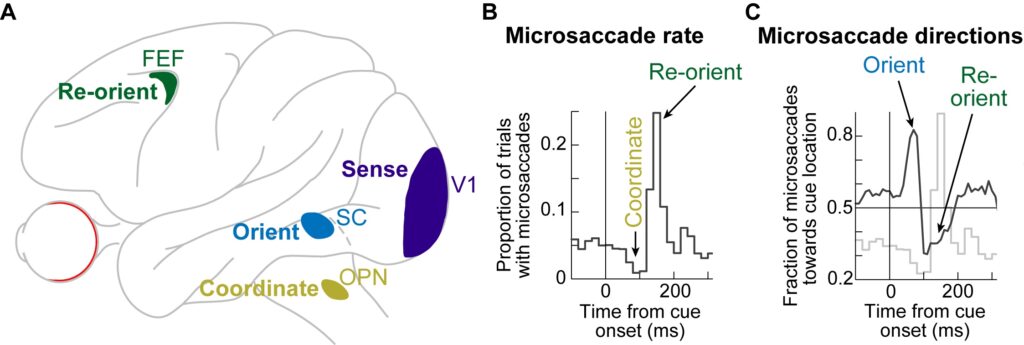We have a new review article in the Special Research Topic on Cortical-Subcortical Loops in Sensory Processing, in the journal Frontiers in Neural Circuits. The research topic is edited by Max Happel, Livia de Hoz, Anita Luthi, and Julio Hechavarria, and it covers a broad range of studies on multiple sensory modalities and multiple animal species.
Our specific contribution to the Research Topic covers cortical and subcortical mechanisms related to vision and eye movements in primates. In particular, we study how visual cues can modulate tiny microsaccades that occur during maintained gaze fixation. We have discovered this phenomenon almost twenty years ago in (Hafed and Clark, 2002), and in follow-up studies. Over the ensuing two decades, we and others have investigated the functional implications of this phenomenon. However, in order to resolve some of the remaining unanswered questions and controversies, it is very important to understand how the phenomenon happens in the first place. That is, what needs to take place in the brain for a peripheral visual cue to influence a tiny eye movement during fixation?
In our review article, we describe the currently known substrates that are necessary for the phenomenon to occur. Importantly, we provide a new framework for understanding the phenomenon, especially the part of it in which microsaccades are strongly inhibited shortly after cue onset (panel B in the image below). Previously, it was almost universally assumed that such “microsaccadic inhibition” is mediated by the superior colliculus (SC). However, we argue otherwise, and we suggest that one needs to look downstream of the SC for better understanding of microsaccadic inhibition. We believe that our new framework will motivate many new and interesting experiments of the lower brainstem, which is very important given how much more there is to learn from that region of the brain.
Our paper can be read online here.

